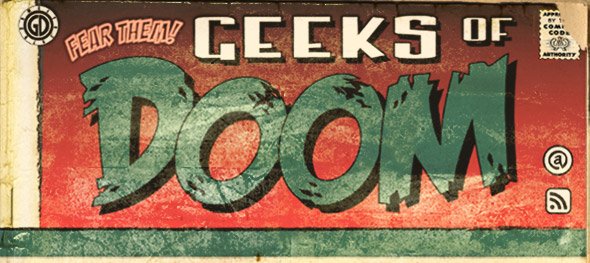
Doctor Who
Season 10, Episode 3 “Thin Ice”
Directed by Bill Anderson
Written by Sarah Dollard
Starring Peter Capaldi, Pearl Mackie, Matt Lucas, Nicholas Burns, Asiatu Koroma, Peter Singh
BBC America
Air date: April 29, 2017
This week, Doctor Who Episode 10.3 brings us a veritable melange of different topics. We get some costume drama. There is also some criticism of the class structure of British society. There is even some [gasp!] confrontation of race issues. Yet somehow, we also get to have a good deal of fun. The show feels quite sure of itself and is willing to take a few risks (albeit small ones). Those gambits largely pay off and take the Doctor and Pearl to a few places the show rarely goes. It’s thin ice, in more than one sense.
The history of Doctor Who and race does not paint a terribly pretty picture. The TV series came into being just as the glorious British Empire was fading out completely, and the show displays some of the British imperial hauteur. It is, at the end of the day, mostly about a mature British man sorting out the problems of any number of other cultures. All the actors who have played the Doctor are white, as are nearly all of his traveling companions. It’s as if the world would be much better place if there were just a few more white British men around in a position to fix things.
Along with that, the show is not immune to the racial attitudes of its times… and racial consciousness in media was a lot less developed in the 1960s and 1970s. So, you have a scientific expedition in “Tomb Of The Cybermen” with a stereotypical burly non-white porter. “The Celestial Toymaker” shows us Michael Gough dressed in Manchu Imperial costume and its title plays on China as the Celestial Empire. Later, “The Talons Of Weng-Chiang” has white actor John Bennett made up to be Asian speaking lines like “I thought we all looked alike.”
Even when the show added Noel Clarke as the first recurring non-white character and Freema Agyeman as the first non-white companion, the issues of race are rarely (if ever) confronted. This appears to be a conscious decision on the part of Russell T. Davies. You can take the approach that Norman Lear took with television sitcoms like Good Times and The Jeffersons and confront racial issues more directly. Alternately, you can follow the route that Bill Cosby took with The Cosby Show by bringing shared forms and values to the forefront and place racial tension in the background. With new Doctor Who, Davies opted for the latter approach, and even when Martha Jones was brought to Elizabethan England in “The Shakespeare Code,” there is reassurance for Martha Jones that race will not play a large role in what happens there.
So, we have some new territory this week in that the Doctor and Bill confront race and racism in multiple passages of the script. The week finds the TARDIS in 1814 London, and we are reminded that slavery was still legal in the British Empire. Likewise, we see some flagrant racism on the part of one of the characters, and we see what the Doctor’s direct response is to it. In one sense, the show’s first confrontation with race for a non-white companion is not much of an effort. In another, this is where the show should have been decades ago given the universal humanism that the Doctor frequently espouses… so it’s not an unwelcomed thing.
As for the rest, we get some pretty costumes and some interesting metaphysical sparring between the Doctor and Bill. Is the Doctor a metaphorical angel with one wingtip dipped in blood? Is he really all high minded ideas on the surface but really a nasty piece of work underneath? There is some interesting dramatic value in letting Bill discover these questions and then mull over the answers.
The rest is just pretty much window dressing. There is an interesting McGuffin lurking under the Thames and its relationship to the birth of the Industrial Revolution in Britain is somewhat unsettling… and impossible. We get a cast of characters, but they’re all pretty much two-dimensional cutouts that serve the plot. It’s all reasonably written and well directed, but the real heft of the script is between the Doctor and Bill. It is that relationship where the show finds the confidence to take some risks.
This episode is a sweet confection while it unfolds in front of you, but its virtues quickly fade after the credits roll. I kept wondering what some length would do for the plot, because it felt in need of a little more back story to give it some staying power. At the same time, that’s the plight of the modern hour-long episode of Doctor Who: it’s more about inserting the Doctor and his companion(s) into the tropes of other established literary, theatrical, and cinematic forms. The hour-long episodic format frequently doesn’t allow for much else. On those terms, “Thin Ice” does a more than satisfactory job.






So far I am liking this season. I am liking relationship with The Doctor and Bill. It really does fell like a teacher and student relationship. I would love to see more stories that get into race, poverty and other social issues. Not every episodes but more of them. It was what Science Fiction and Westerns do best.
Comment by Stephen Welch — May 1, 2017 @ 11:17 am
Seems you rather missed the point of that line in Talons. The line was “I understand we all look the same?” and was intended as a mockery of racism by the Asian character. The Doctor immediately responds with “Are you Chinese?”.
Then there is your complete lack of recognition for the way racism is addressed in Human Nature/Family of Blood. Martha was directly confronted with some awful bigotry “with hands like those, how do you know when they’re clean?” and faced up to it alone (with the doctor’s mind inside the watch).
Maybe you should try fairly examining the racism and anti-racism of Doctor Who. Rather than cherry picking to present a one sided and incorrect view of a show that has always been very progressive.
Comment by Cryer — May 1, 2017 @ 1:22 pm